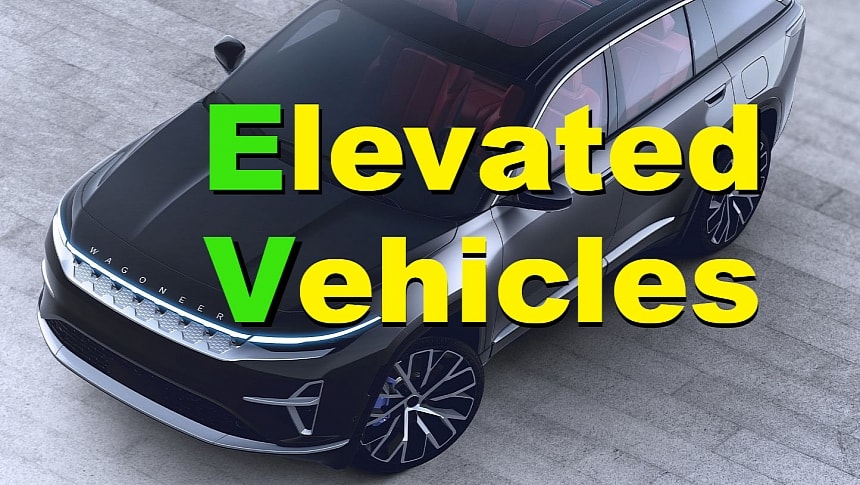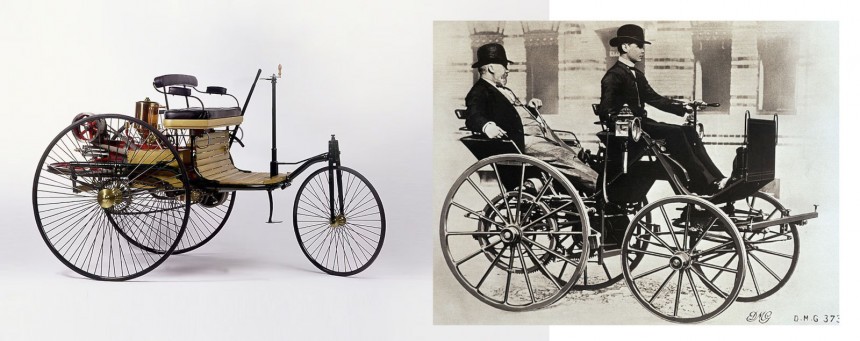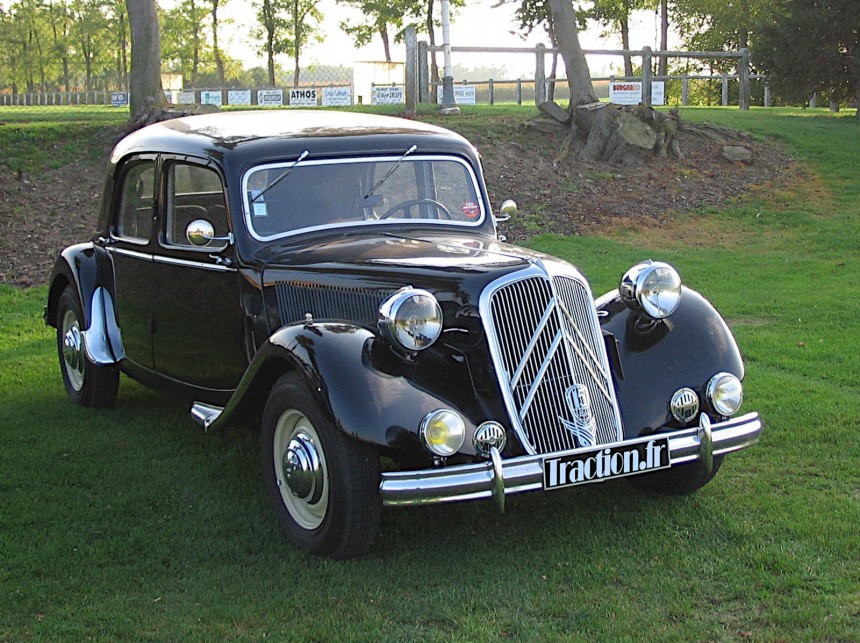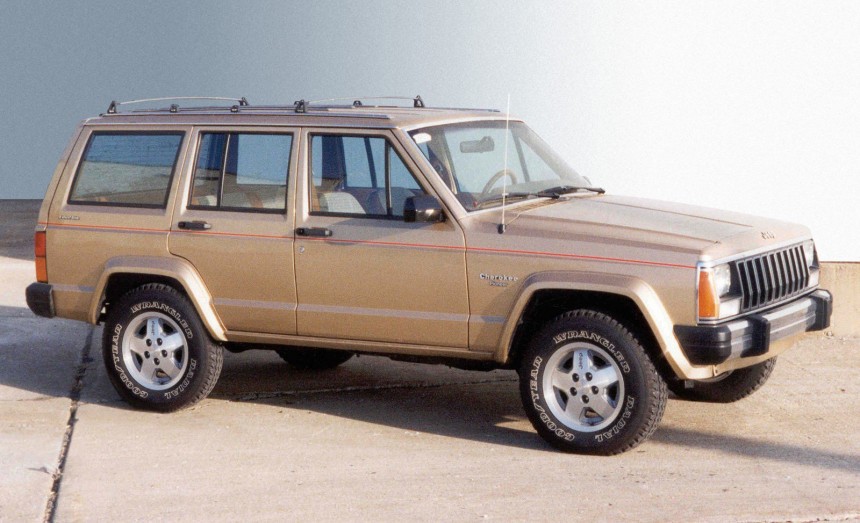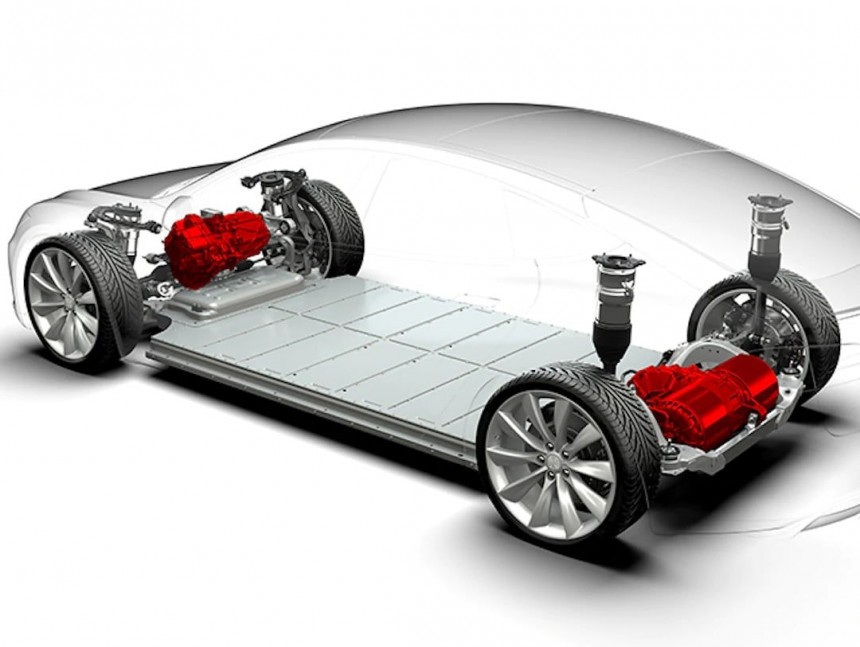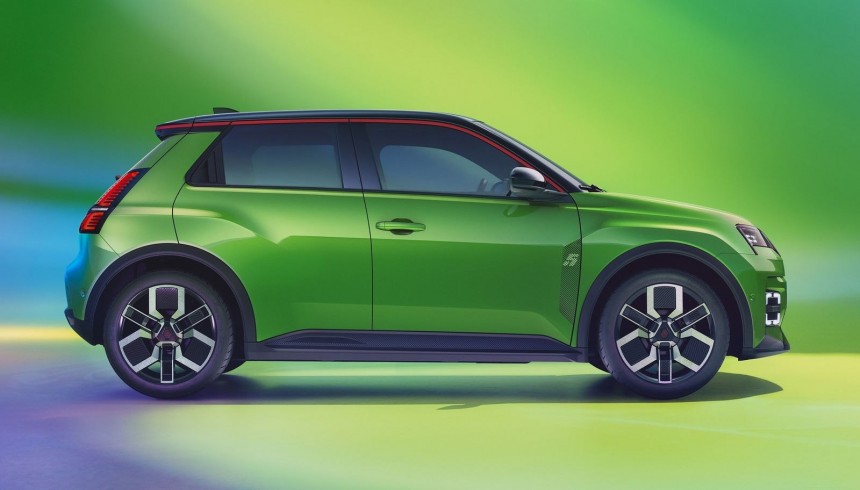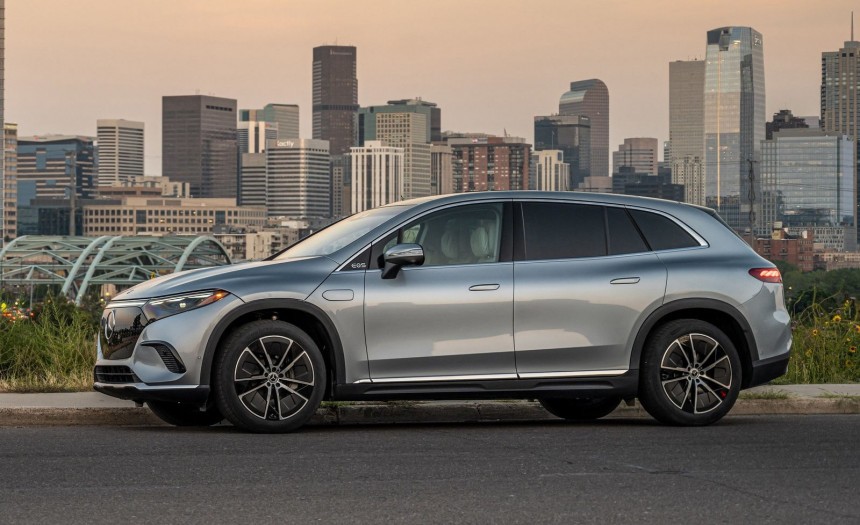America's public is the biggest fan of too-big and too-heavy passenger cars, and this trend spreads around the world at a fast pace. Apart from the psychological "Mine is bigger!" argument, some other factors explain why cars will only get bigger and why SUVs have become the dominant species.
As 2023 was the first year SUVs became the best-selling type of cars, I feel the need to debate how we got here and whether this is really a bad thing. I also have to admit my biased position because I'm against big SUVs and pick-up trucks, like those roaming American roads.
So, I'll start this by considering SUVs as the"bad guy" "elephant in the room," and we'll see how it goes from there.
Sounds familiar? I'm sure it does because, more or less, I just described a body-on-frame truck. Almost any carriage in the last few thousand years had big wheels, which also meant a high distance from the wheels' axe to the ground.
If you think it through, because of their high ground clearance and because they were boxy, I could conclude that those carriages were the first SUVs. It doesn't really matter if they were pulled by horses (or by other people who were called slaves…) or if they were self-propelled thanks to different kinds of engines.
Those carriages, followed by the first automobiles invented at the end of the 19th century, all had big wheels and a very generous (sometimes too generous) ground clearance. Let me be clear: while it was improved over time, the body-on-frame concept is thousands of years old.
While many consider the three-wheeled Benz Patent-Motorwagen or Daimler's four-wheeled motor carriage from the 1880s the most important historical revolution in vehicle history, I think this is overstating.
Yes, these German engineers sparked the ICE era, but they basically replaced horses and steam engines with internal combustion engines. Sorry, petrolheads, for debunking your "religion," but the wheeled cars didn't change significantly until several decades later.
Even the Ford Model T, the first series affordable production car, was basically a self-propelled body-on-frame small carriage on wheels with a pretty high ground clearance of 10 inches (25.4 cm). The vast majority of SUVs today have much lower-ground clearances! Is this crazy, or what?
In the 1920s, some engineers became more interested in applying the planes' aerodynamics to cars: Austrian Edmund Rumpler's Tropfenwagen or Romanian Aurel Persu's "water drop" prototype looked more like UFOs on four wheels, but they paved the way for modern automobiles.
However, what I consider the real revolution in car history occurred in the 1930s when Lancia Lambda and then Citroen Traction Avant made it clear that the new unibody concept was the right choice for lighter, smaller, and more efficient cars.
The monocoque body led to less heavy vehicles with a much lower ground clearance and, consequently, a lower center of gravity. In addition, thanks to an increasing interest in aerodynamics, the new unibody concept led to great improvements in handling and performance.
After the Second World War, the vehicle realm was cut into two main areas: the body-on-frame offroaders or pick-up trucks on the one hand and the wide variety of unibody passenger car types on the other hand.
Actually, body-on-frame cars have become a minority in the last half-century, as unibody cars have proved more practical and affordable.
The market for such vehicles was small, as most people simply needed affordable cars for the daily commute or spacious family cars for traveling on those long paved roads. Offroaders were expensive, costly to run, and had poor handling on the road.
But America was different. The pick-up truck mania flourished after the war thanks to the versatility of such a utilitarian vehicle. For those needing space primarily for their families, car makers provided passenger versions derived from pick-up trucks, especially in areas where normal wagon-style cars couldn't face harsh routes.
Jeep Cherokee started as a Wagoneer sibling, hence a full-size offroad wagon, but in 1984, the XJ generation became the first unibody Jeep. In fact, its historical role is quite underrated, although it's widely seen as the first unibody offroader, combining the advantages of a lighter body and those of the 4x4 drive and the high ground clearance.
It wasn't called an SUV at the time, but many used "sport" and "utility" to describe it. It had worse performance, handling, and consumption on the road compared to a similar-sized regular car, while it was less competent outside the road than a similar offroader. But this is just one side of the coin.
The marketing successfully promoted the other side: it was a more adequate car for road usage than a conventional offroad car and far more competent than a road car outside paved roads. Add to this the brand's popularity and the emphasis on unlimited freedom.
No wonder it was a hit, as it was seen as the almost perfect combination between a "sporty offroader" and "a utilitarian passenger car." A decade later, Toyota launched its more affordable SUV, the RAV4, standing for "Recreational Activity Vehicle."
As no official attribution for the "Sport Utility Vehicle" designation exists, I believe RAV4 made popular wisdom to spawn the SUV monicker. It was then officialized by Mercedes-Benz when the new ML luxury SUV was featured in the "Jurassic Park" movie. A little later, the BMW X6 tried to be original using the "Sports Activity Vehicle" (SAV) expression.
It seems that people are more attracted to looks that make them feel like they can conquer Everest, but they're fine using these slightly raised cars only to climb sidewalks more easily and pass tram rails a little bit more comfortably than a regular car.
Surprisingly, this flawed view suits EVs better than I expected. Let's get back a little to the carriages: they were tall because they had big wheels, which meant high above-the-ground axles. Likewise, the body-on-frame technical solution results in higher ground clearance and taller vehicles.
For over a decade now, Tesla has shown everybody the best solution for battery electric cars: the "skateboard" platform. It consists of a frame, including the battery as a structural part. On top of it, you can place all kinds of bodies, ranging from sedans or hatchbacks to SUVs or crossovers.
Basically, Tesla went back in time and recreated the body-on-frame concept, but in SpaceX style. Apart from the metaphors, it's important to note that the "skateboard" platform containing the battery has a certain thickness, which inherently adds to the height compared to a similar ICE car.
That's why making an electric SUV or crossover is more practical and cost-efficient than an electric sedan or hatchback. A sleek sedan or a compact city car also requires a lower overall height, which means interior space constraints.
While the Tesla Model 3 has the same 1.44 meters (56.7 inches) height as the similarly sized BMW 3-Series, the latter is more roomier for the passengers. Keep in mind that the bimmer is not the most spacious in this class. And a subjective personal note: when I first entered a Model 3, the cabin felt Golf-sized to me.
Things are a whole lot better in the Model Y, as the crossover is 18 cm (7 inches) higher than the Model 3. Still, compared to the similar-sized ICE-powered BMW X4, the electric Model Y is not as roomier. But for most people, this difference is futile as the EV is spacious enough. It's one of the explanations for the Model Y being the best-selling car in the world.
How about those affordable EVs that carmakers struggle to put on the market as fast as possible? Of course, they are mostly city cars. While the Citroen e-C3 is just an electric conversion of a non-EU ICE crossover, the new Renault 5 E-Tech was conceived from the ground up as an electric-only model aimed mainly at city dwellings.
The Renault doesn't look like an SUV or a crossover. Still, it's 1.5 meters (59 inches) high, which is only 6 cm (2.3 inches) less than the proclaimed little SUV e-C3. We have the same difference in height between the electric "Cinq" and its ICE cousin, Clio, the electric model being taller.
As you may have already guessed, that's because of the battery underneath the electric car, on top of which the rest of the body is built. And one more thing: for a no-thrills distance to the ground of around 14.5 cm (5.7 inches), the 5 E-Tech is fitted with 18" wheels. Just like the defunct thrilling 220 HP Clio RS used to have…
This is an important hint, as battery safety concerns are among the priorities lately (because everyone on social media knows "for sure" that EVs catch fire for no reason… yeah, right). In fact, it is important for carmakers to keep EVs a little higher from the ground than ICE cars, thus minimizing the risk of the battery pack getting punctured because of unexpected obstacles on the road.
There's also a comfort-related detail that many SUVs and crossovers users find very important: the more elevated seat position allows for easier entry in the car, especially for older people or those having back pain issues or weight problems.
I urge the weight-challenged people not to be offended by me mentioning the last category. A recent study published by the World Health Organisation just before World Obesity Day in March states that over a billion people are clinically obese worldwide. WHO also says that another 1.8 billion people are overweight.
So, around three people in eight have weight problems worldwide. You can't expect carmakers not to address this fact, and it seems that SUVs and crossovers are a part of the solution. Of course, SUVs and crossovers are also a big part of the transportation sector problems.
According to a recent T&E study, the average width of new cars in Europe rose 1 cm every two years in the last decade because of SUV proliferation. This already causes traffic problems in cities, because, you know, you can't just make wider streets every year.
However, the real problem is not necessarily the increasing number of SUVs, as most of them simply replace small and compact cars, and the differences in length and width are not as dramatic as those of regular cars.
The real problem is that carmakers put on the market much bigger SUVs than people really need. 5 meters (197 inches) luxury SUVs like Mercedes-Benz EQS, BMW iX, Volvo EX90, or KIA EV9 are huge for European roads and cities.
Their excuse is that they offer three rows of seats, but MPVs are more practical if you need to carry many people. The Volvo EM90 is the best example. While its ground clearance is only 16 cm (6.3 inches) compared to EX90's 21 cm (8.3 inches), you can't expect the SUV to be much more capable.
In the end, I think that crossover-styled EVs are going to be the norm in the next two or three decades. It's simply a matter of engineering because the batteries are placed in the "skateboard" under the floor. The marketing luring customers toward this type of vehicle is just a side effect.
So, I'll start this by considering SUVs as the
Carriages were the first SUVs, and this is not a joke
Basically, a car is a motorized vehicle on wheels, right? Since the invention of the wheel some five or six thousand years ago, it was used for carriages. They had various forms, but essentially, the basis was a frame placed above the wheels' axes, and on top of this, there were different types of bodies for transporting goods or people.Sounds familiar? I'm sure it does because, more or less, I just described a body-on-frame truck. Almost any carriage in the last few thousand years had big wheels, which also meant a high distance from the wheels' axe to the ground.
If you think it through, because of their high ground clearance and because they were boxy, I could conclude that those carriages were the first SUVs. It doesn't really matter if they were pulled by horses (or by other people who were called slaves…) or if they were self-propelled thanks to different kinds of engines.
Those carriages, followed by the first automobiles invented at the end of the 19th century, all had big wheels and a very generous (sometimes too generous) ground clearance. Let me be clear: while it was improved over time, the body-on-frame concept is thousands of years old.
Yes, these German engineers sparked the ICE era, but they basically replaced horses and steam engines with internal combustion engines. Sorry, petrolheads, for debunking your "religion," but the wheeled cars didn't change significantly until several decades later.
From body-on-frame to unibody or monocoque
The First World War greatly impacted the course of the automobile. Wheeled vehicles had to be capable of transporting lots of soldiers and equipment in off-road environments. Trucks of all sizes became the norm, while the few regular cars used truck-like frames and smaller wheels, but they were still big and bulky.Even the Ford Model T, the first series affordable production car, was basically a self-propelled body-on-frame small carriage on wheels with a pretty high ground clearance of 10 inches (25.4 cm). The vast majority of SUVs today have much lower-ground clearances! Is this crazy, or what?
In the 1920s, some engineers became more interested in applying the planes' aerodynamics to cars: Austrian Edmund Rumpler's Tropfenwagen or Romanian Aurel Persu's "water drop" prototype looked more like UFOs on four wheels, but they paved the way for modern automobiles.
However, what I consider the real revolution in car history occurred in the 1930s when Lancia Lambda and then Citroen Traction Avant made it clear that the new unibody concept was the right choice for lighter, smaller, and more efficient cars.
After the Second World War, the vehicle realm was cut into two main areas: the body-on-frame offroaders or pick-up trucks on the one hand and the wide variety of unibody passenger car types on the other hand.
Actually, body-on-frame cars have become a minority in the last half-century, as unibody cars have proved more practical and affordable.
But the Americans had to mess things up, didn't they?
Jeep became the most popular worldwide for those seeking adventures far away from roads and highways thanks to Willy's versatility on rough terrain in WWII. Many other brands copied its offroad unmistakable design, while others followed Land Rover's Defender boxy style.The market for such vehicles was small, as most people simply needed affordable cars for the daily commute or spacious family cars for traveling on those long paved roads. Offroaders were expensive, costly to run, and had poor handling on the road.
But America was different. The pick-up truck mania flourished after the war thanks to the versatility of such a utilitarian vehicle. For those needing space primarily for their families, car makers provided passenger versions derived from pick-up trucks, especially in areas where normal wagon-style cars couldn't face harsh routes.
Jeep Cherokee started as a Wagoneer sibling, hence a full-size offroad wagon, but in 1984, the XJ generation became the first unibody Jeep. In fact, its historical role is quite underrated, although it's widely seen as the first unibody offroader, combining the advantages of a lighter body and those of the 4x4 drive and the high ground clearance.
The marketing successfully promoted the other side: it was a more adequate car for road usage than a conventional offroad car and far more competent than a road car outside paved roads. Add to this the brand's popularity and the emphasis on unlimited freedom.
No wonder it was a hit, as it was seen as the almost perfect combination between a "sporty offroader" and "a utilitarian passenger car." A decade later, Toyota launched its more affordable SUV, the RAV4, standing for "Recreational Activity Vehicle."
As no official attribution for the "Sport Utility Vehicle" designation exists, I believe RAV4 made popular wisdom to spawn the SUV monicker. It was then officialized by Mercedes-Benz when the new ML luxury SUV was featured in the "Jurassic Park" movie. A little later, the BMW X6 tried to be original using the "Sports Activity Vehicle" (SAV) expression.
The SUV concept surprisingly fits the EV recipe
The bottom line is that SUVs became increasingly popular as carmakers spawned more affordable models using more affordable car technical platforms. Despite logic, even though most SUVs today are simply unfit for off-roading, just like the regular cars they derive from, the demand for these SUVs only goes higher.It seems that people are more attracted to looks that make them feel like they can conquer Everest, but they're fine using these slightly raised cars only to climb sidewalks more easily and pass tram rails a little bit more comfortably than a regular car.
Surprisingly, this flawed view suits EVs better than I expected. Let's get back a little to the carriages: they were tall because they had big wheels, which meant high above-the-ground axles. Likewise, the body-on-frame technical solution results in higher ground clearance and taller vehicles.
For over a decade now, Tesla has shown everybody the best solution for battery electric cars: the "skateboard" platform. It consists of a frame, including the battery as a structural part. On top of it, you can place all kinds of bodies, ranging from sedans or hatchbacks to SUVs or crossovers.
That's why making an electric SUV or crossover is more practical and cost-efficient than an electric sedan or hatchback. A sleek sedan or a compact city car also requires a lower overall height, which means interior space constraints.
While the Tesla Model 3 has the same 1.44 meters (56.7 inches) height as the similarly sized BMW 3-Series, the latter is more roomier for the passengers. Keep in mind that the bimmer is not the most spacious in this class. And a subjective personal note: when I first entered a Model 3, the cabin felt Golf-sized to me.
Things are a whole lot better in the Model Y, as the crossover is 18 cm (7 inches) higher than the Model 3. Still, compared to the similar-sized ICE-powered BMW X4, the electric Model Y is not as roomier. But for most people, this difference is futile as the EV is spacious enough. It's one of the explanations for the Model Y being the best-selling car in the world.
How about those affordable EVs that carmakers struggle to put on the market as fast as possible? Of course, they are mostly city cars. While the Citroen e-C3 is just an electric conversion of a non-EU ICE crossover, the new Renault 5 E-Tech was conceived from the ground up as an electric-only model aimed mainly at city dwellings.
The Renault doesn't look like an SUV or a crossover. Still, it's 1.5 meters (59 inches) high, which is only 6 cm (2.3 inches) less than the proclaimed little SUV e-C3. We have the same difference in height between the electric "Cinq" and its ICE cousin, Clio, the electric model being taller.
This is an important hint, as battery safety concerns are among the priorities lately (because everyone on social media knows "for sure" that EVs catch fire for no reason… yeah, right). In fact, it is important for carmakers to keep EVs a little higher from the ground than ICE cars, thus minimizing the risk of the battery pack getting punctured because of unexpected obstacles on the road.
Expect future EVs to be EV: Elevated Vehicles
While not every electric vehicle looks or will look like an SUV, most do or will because the market demands it. I don't have time now for the "vicious circle" debate (is it the customers who want SUVs, or is it the carmakers forcing the trend?), but frankly, designing a higher car to have an SUV-ish look makes more sense than compromising with the sedan or hatchback style.There's also a comfort-related detail that many SUVs and crossovers users find very important: the more elevated seat position allows for easier entry in the car, especially for older people or those having back pain issues or weight problems.
I urge the weight-challenged people not to be offended by me mentioning the last category. A recent study published by the World Health Organisation just before World Obesity Day in March states that over a billion people are clinically obese worldwide. WHO also says that another 1.8 billion people are overweight.
So, around three people in eight have weight problems worldwide. You can't expect carmakers not to address this fact, and it seems that SUVs and crossovers are a part of the solution. Of course, SUVs and crossovers are also a big part of the transportation sector problems.
According to a recent T&E study, the average width of new cars in Europe rose 1 cm every two years in the last decade because of SUV proliferation. This already causes traffic problems in cities, because, you know, you can't just make wider streets every year.
However, the real problem is not necessarily the increasing number of SUVs, as most of them simply replace small and compact cars, and the differences in length and width are not as dramatic as those of regular cars.
Their excuse is that they offer three rows of seats, but MPVs are more practical if you need to carry many people. The Volvo EM90 is the best example. While its ground clearance is only 16 cm (6.3 inches) compared to EX90's 21 cm (8.3 inches), you can't expect the SUV to be much more capable.
In the end, I think that crossover-styled EVs are going to be the norm in the next two or three decades. It's simply a matter of engineering because the batteries are placed in the "skateboard" under the floor. The marketing luring customers toward this type of vehicle is just a side effect.
